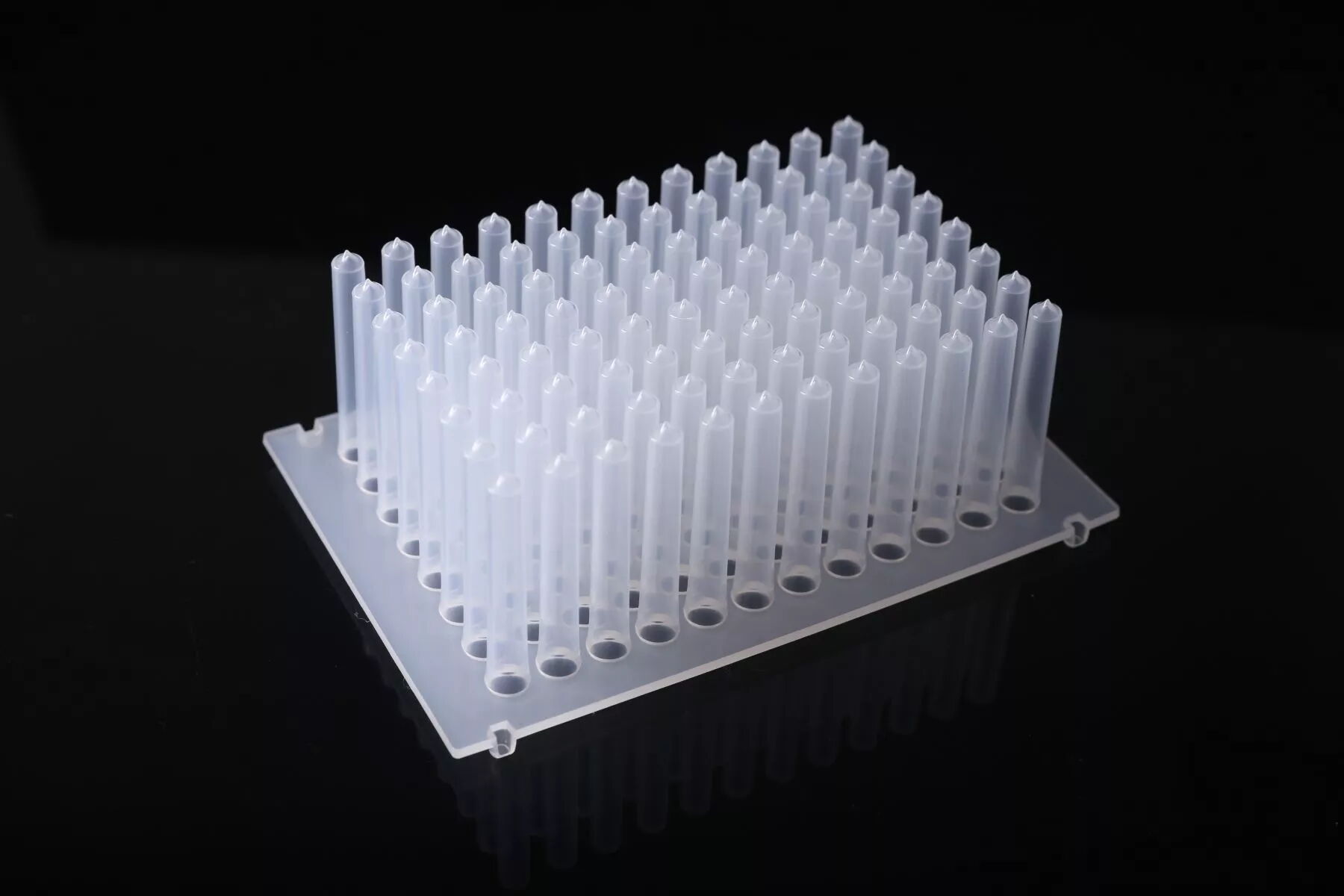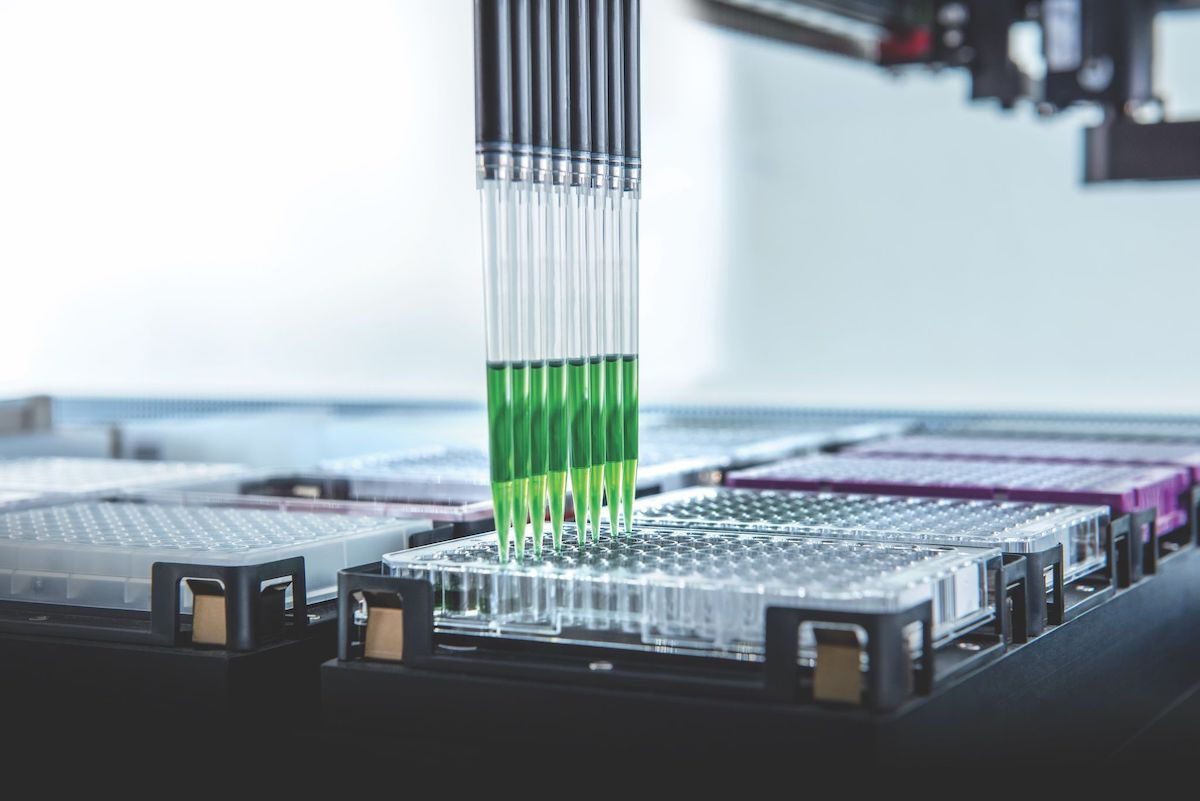Packaging of Pipette Tips
Oct 11, 2022
1.1 The analysis of packaging of pipette tips
There are three main types of pipette tips on the market: bagged, boxed and refillable pipette tips. Among them, bagged tips are mainly used in China, and boxed tips and refill tips account for a small share. Bagged tips are mainly used due to both price and technology. For bagged tips, as shown in Figure 1-1(a), the pipette tips are scattered in plastic ziplock bags. Usually, each bag contains 500 or 1000 tips. For some pipette tips with high volume, there will be fewer tips in a bag. After most laboratories purchase bagged tips, they need to be sorted and loaded manually by laboratory staff, so that the tips are inserted into the tip box in a vertical state, which is time-consuming and labor-intensive; there is a risk of contamination. At present, there is a lack of automatic packaging for high-quality tips in China. This is also the main reason why the tips sold in the form of boxes in China are not widely used and are expensive. As shown in Figure 1-1(b), boxed tips are generally 1.5 to 2.5 times more expensive than bagged tips.
Refill tips, as shown in Figure 2-1(c), have a new form of tip packaging in recent years. It can effectively save storage space by stacking the pipette tips into a tower, and most of them are in a group of 8 or 10 plates. Compared with bagged tips, the tips packaged in this form can effectively avoid contact and easily load pipette tips into tip boxes, which are about 10 to 20% cheaper than boxed tips. At present, this type of packaging has shown good development momentum. In addition, the use of plastics has been greatly reduced by supplementary suction tips, which is more in line with the requirements for environmental protection. However, due to technical and other limitations, this form of packaging accounts for a large share of the domestic market. The share is still very small.

(a) Bulk pipette tips (b) Boxed pipette tips (c) Refill pipette tips
Figure 1-1 The existing packaging of the pipette tip
2.1.2 Introduction of pipette tips and corresponding boxes
At present, there are many pipette tips with different specifications on the market and the consumption is great. The total capacity can range from 10μL to 1000uL, as shown in Figure 1-2. The following three types are the most widely used: 10uL, 200uL and 1000uL, as shown in Figure 1-3. The specifications of the pipette tips are different, and their sizes and corresponding box structures are also different, as shown in Table 2-1. In fact, even the pipette tips of the same specification have different lengths from different manufacturers.
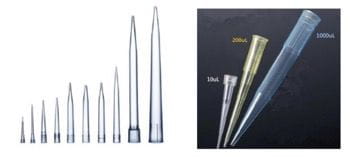
Figure 1-2 Pipette tips Figure 1-3 Commonly used pipette tips
Table 2-1 Introduction of the pipette tip and its corresponding boxes
There are three main types of pipette tips on the market: bagged, boxed and refillable pipette tips. Among them, bagged tips are mainly used in China, and boxed tips and refill tips account for a small share. Bagged tips are mainly used due to both price and technology. For bagged tips, as shown in Figure 1-1(a), the pipette tips are scattered in plastic ziplock bags. Usually, each bag contains 500 or 1000 tips. For some pipette tips with high volume, there will be fewer tips in a bag. After most laboratories purchase bagged tips, they need to be sorted and loaded manually by laboratory staff, so that the tips are inserted into the tip box in a vertical state, which is time-consuming and labor-intensive; there is a risk of contamination. At present, there is a lack of automatic packaging for high-quality tips in China. This is also the main reason why the tips sold in the form of boxes in China are not widely used and are expensive. As shown in Figure 1-1(b), boxed tips are generally 1.5 to 2.5 times more expensive than bagged tips.
Refill tips, as shown in Figure 2-1(c), have a new form of tip packaging in recent years. It can effectively save storage space by stacking the pipette tips into a tower, and most of them are in a group of 8 or 10 plates. Compared with bagged tips, the tips packaged in this form can effectively avoid contact and easily load pipette tips into tip boxes, which are about 10 to 20% cheaper than boxed tips. At present, this type of packaging has shown good development momentum. In addition, the use of plastics has been greatly reduced by supplementary suction tips, which is more in line with the requirements for environmental protection. However, due to technical and other limitations, this form of packaging accounts for a large share of the domestic market. The share is still very small.

(a) Bulk pipette tips (b) Boxed pipette tips (c) Refill pipette tips
Figure 1-1 The existing packaging of the pipette tip
2.1.2 Introduction of pipette tips and corresponding boxes
At present, there are many pipette tips with different specifications on the market and the consumption is great. The total capacity can range from 10μL to 1000uL, as shown in Figure 1-2. The following three types are the most widely used: 10uL, 200uL and 1000uL, as shown in Figure 1-3. The specifications of the pipette tips are different, and their sizes and corresponding box structures are also different, as shown in Table 2-1. In fact, even the pipette tips of the same specification have different lengths from different manufacturers.

Figure 1-2 Pipette tips Figure 1-3 Commonly used pipette tips
Table 2-1 Introduction of the pipette tip and its corresponding boxes
| Specifications | Specifications for boxes (pieces per box) | Arrangement for holes |
| 10uL | 96 | 8×12 |
| 200uL | 96 | 8×12 |
| 300uL | 96 | 8×12 |
| 1000uL | 60 (domestic ordinary) | 6×10 |
| 96 (extended pipette tips) | 8×12 | |
| 100 (imitated imported tips) | 10×10 | |
| 5mL | 28 | 4×7 |
| 10mL | 15 | 3×5 |
The dimensions of the pipette tip with 10uL and its corresponding box are as follows:
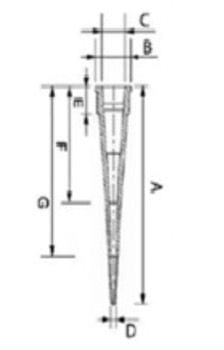
Figure 1-4 The pipette tip with 10uL
Table 2-2 Sizes of pipette tips with 10uL
| Specifications | A | B | C | D | E | F | G |
| 10uL | 31.6 | 6.0 | 3.8 | 0.86 | 3.9 | 16.8 | 24.7 |
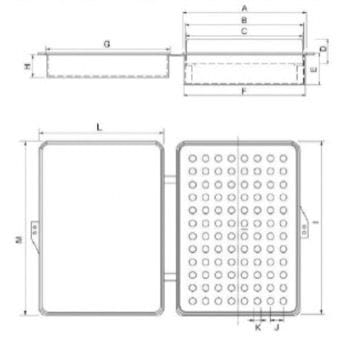
Figure 1-5 Boxes of pipette tips with 10uL
Table 2-3 Sizes of boxes for pipette tips with 10uL
| Specifications | A | B | C | D | E | F | G |
| 10uL | 85.79 | 81.79 | 80.8 | 16.7 | 21.9 | 83.79 | 85.79 |
| H | I | J | K | L | M | - | |
| 15.7 | 119.6 | 8.98 | 4.85 | 85.79 | 120.6 | - |
1.3 The analysis of materials of pipette tips and boxes
Pipette tips are made of a rigid material, which is polypropylene resin (PP) by injection molding. The pipette tip made from polypropylene has good strength, rigidity and good corrosion resistance, which is the preferred material for biochemical experiments. The outer box of pipette tips usually adopts injection molded polypropylene resin (PP). Like the material used for pipette tips, polypropylene boxes have excellent aging resistance, long service life, and can be recycled for secondary use, which is very friendly to the environment. In addition, the polypropylene box has excellent mechanical properties and can protect the contents well.
Previous: Different Pipette Tips
Next: Automatic Packaging Systems for Pipette Tips

